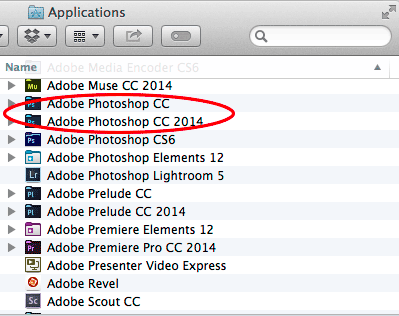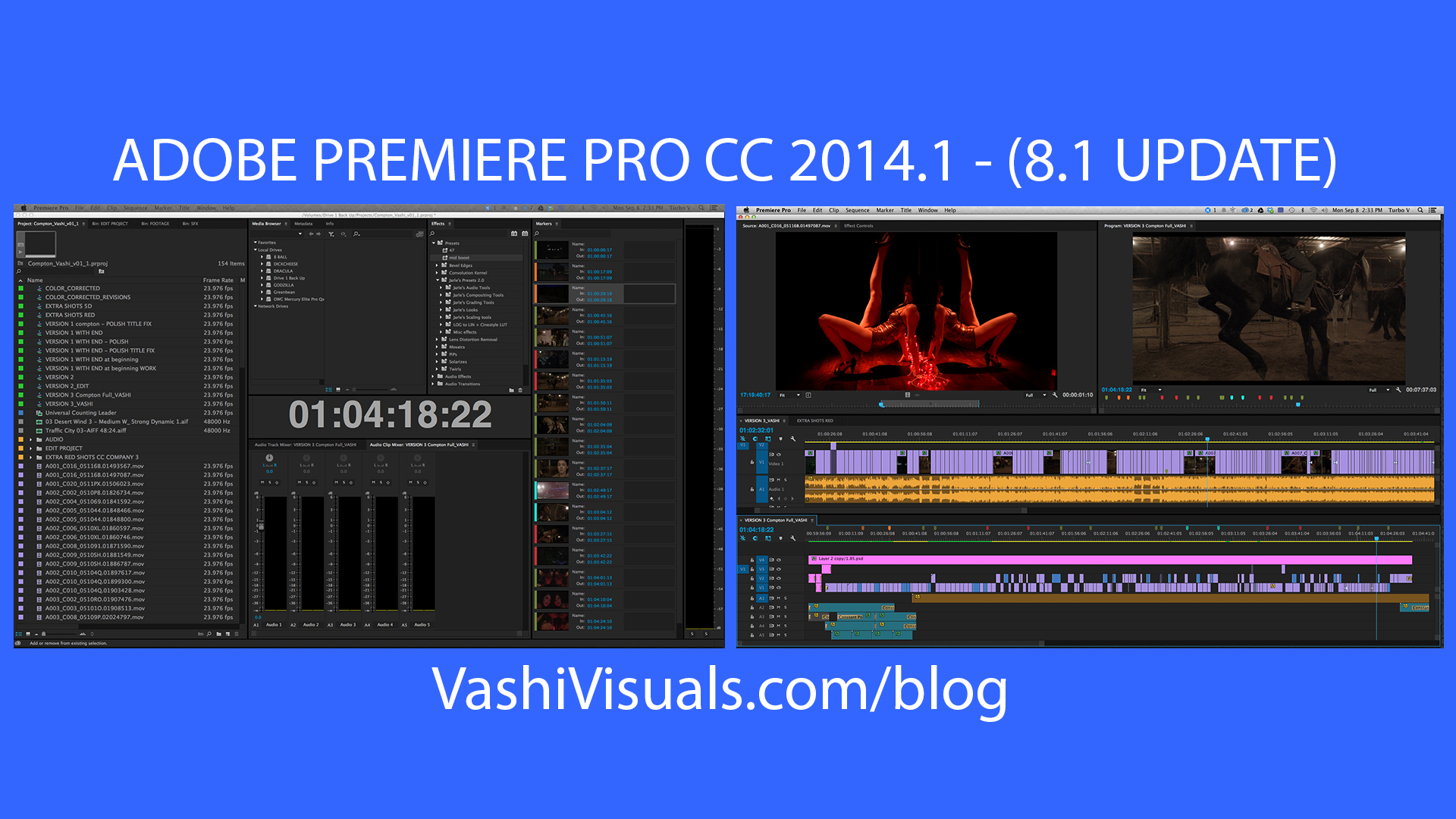

- HOW TO MOVE IMAGES IN ADOBE PREMIERE PRO CC 2014 UPDATE
- HOW TO MOVE IMAGES IN ADOBE PREMIERE PRO CC 2014 PROFESSIONAL
- HOW TO MOVE IMAGES IN ADOBE PREMIERE PRO CC 2014 SERIES
Premiere Pro still has adjustment layers, which affect multiple clips under them in the timeline, and you can still add effects to individual clips in the timeline, of course.Īdobe touts new TypeKit support in Premiere Pro CC 2014, but really, it’s just a new link under the Title menu that says Add Fonts from TypeKit. It has to be one clip you can’t “link” different clips. But now Premiere Pro lets you designate a “master clip”: Display a clip in the Source window, drop effects onto the Source window (not the timeline), and wherever that clip appears in the timeline, the same effects and effects implementations will be seen. Using this feature can ensure some consistency, but it can be time-consuming, and if you change one clip’s effects, you have to go back and use Paste attributes all over again.

HOW TO MOVE IMAGES IN ADOBE PREMIERE PRO CC 2014 UPDATE
If you do need to update colors or other elements of your motion graphics, you’ll have to do so in After Effects, but when you do so and save your work, the graphic, of course, will get updated automatically in Premiere Pro.įor you to be able to make text edits to After Effects compositions, you must have After Effects installed and the “Template (unlocked text layers editable in Premiere Pro” option turned on in After Effects.Ī useful feature in Premiere Pro is that you can select a clip in the timeline, then use “Paste attributes” with other clips in the timeline to copy all of the first clip’s effects and effects implementations. But this feature can be really useful if you often reuse graphics-and, say, all you want to do is change the date or a name. You can’t change text properties or spacing, and you certainly can’t change anything else in the After Effects composition. You must have After Effects installed, too, and you must have enabled an option to unlock the text layers in After Effects before you add the graphics composition, but if you’ve done that, you can see the text layers as lines in a Premiere Pro panel, in which you simply retype what you want. Now, however, you can edit the text of those graphics without leaving Premiere Pro. The key to success with this procedure is to position the mask over relatively constant portions of the frame-inside the borders of a face, or over the solid background of a T-shirt.Īs with previous versions, you can incorporate motion graphics created in Adobe After Effects into Premiere Pro projects. If you want to obscure multiple subjects, then you must create multiple masks, and perform the tracking operation multiple times. If the subject does go behind an object, you’ll have to stop the operation, move the playhead to a point where the subject is visible, and continue the operation.

The “right” clip means one in which the subject doesn’t turn away from the camera or go behind other objects, though some head movement seemed to be okay.

The process was a little slow on my getting-up-there workstation-about a frame per second-but with the right clip, it worked pretty well. With Premiere Pro CC 2014’s new Masking and Tracking feature lets you implement a simple mask to obscure faces, and then it will track that mask as your subject moves.
HOW TO MOVE IMAGES IN ADOBE PREMIERE PRO CC 2014 SERIES
As Premiere Pro analyzes, it creates a series of keyframes-one per frame. Click another button to analyze the clip. Select a clip in the timeline, add an appropriate effect (for example, Mosaic) to the clip, click a button in the Effects Controls panel to create a mask, then resize and position the mask over the offending portion of the video. The blurring process can be challenging in video, but Premiere Pro CC’s new Masking and Tracking features aim to make the process a tad easier. (Would you want your company’s logo seen plastered on the chest of a just-arrested arson suspect?) Why? It can be to avoid revealing a confidential source, to get someone to talk on camera who wouldn’t otherwise, or simply to prevent a known-and litigious-brand from being accidentally associated with a controversial subject. You’ve seen it on “Cops,” on “20-20,” even on the local television news-blurred-out faces of people, or blurred-out logos (or offensive statements) on subjects’ T-shirts. Premiere Pro CC 2014 lets you designate a master clip,” to which you can apply effects that are then applied to all instances of the clip on your timeline. A new feature in Adobe Premiere Pro CC 2014 can make that a much less tedious task.
HOW TO MOVE IMAGES IN ADOBE PREMIERE PRO CC 2014 PROFESSIONAL
If you’ve been caught in an embarrassing situation by the local 6 o’clock news crew, then you’ll appreciate that professional video editors often must protect the innocent by obscuring people’s faces in broadcasts, and in some cases, they may need to avoid trademark infringement by blurring company or product logos.


 0 kommentar(er)
0 kommentar(er)
